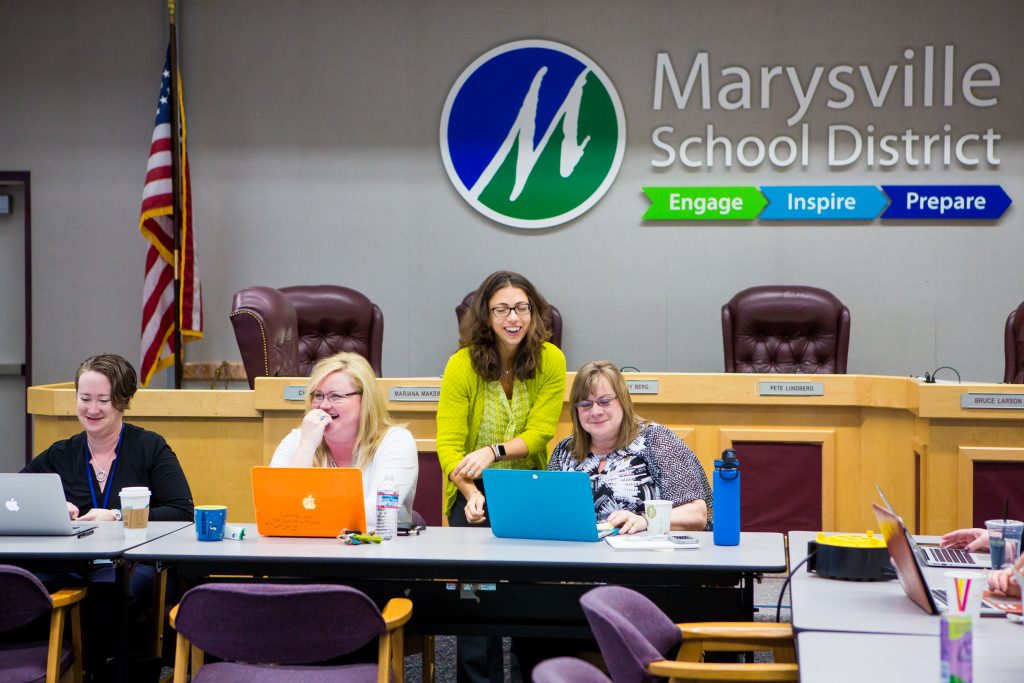Last week I had the pleasure of working with the leadership team at Renaissance College, Hong Kong about the power and purpose of using modern communication tools to tell your school’s story. (If you want to see the resources from that session, click here).
Most schools do a thorough job communicating with parents via email. Many have a variety of management systems to keep parents informed about events, assignments, and reporting. But not many schools use modern communication tools to tell the everyday story of their school. And to be honest, if they do, it’s usually a few specific teachers or tech leaders in the school that are doing the majority of the posting. It can be hard for school leaders to understand the value of using social media tools to share an inside look into learning, daily life, and the people who make up our school community. That’s what this session was all about.
I originally designed a similar session for school leaders as part of our Eduro Learning long term contract with Marysville School District in Washington State a few years ago, then adapted the concepts for the senior leadership at NIST here in Bangkok a few years later, and have run similar sessions at conferences in the Asia region since then. Every time I facilitate a session with school leaders on this topic, the same question comes up: “Why would anyone use anything but our school website to find out about our school?”

And this time I had a response that really made sense (at least to me): When you are going on a trip, you’re definitely going to check out the hotel website. Maybe you’re even going to book your stay on the website directly. But, for sure you’re going to ask some friends that have been there before, check out a reviews site like Trip Advisor, and maybe (if you’re as geeky as me), you might do some image searching on various photo sharing platforms to see “real hotel guest” pictures of the place you’re planning on staying. Because we all know what’s presented on the hotel’s website is the hotel’s idealized version of their property, and there’s likely a lot more to the story.
Well, whether we like it or not, the same is true about our schools. Parents, students and teachers all know that there’s more to a school’s story than what’s listed on the website. Sure, the website might still be the best place to come to find out about events, deadlines or school location. But, if parents are considering where to send their children, or teachers are considering where to accept a job offer, we can all be certain that their research will not stop at the school website.
This is where using modern communication tools, like social media, to tell the day-to-day life stories of our schools can be so powerful. Plus, the reality is that if we’re not doing it as representatives of the school, then someone else is: maybe it’s students, maybe it’s teachers, maybe it’s parents. But if we’re not making an effort to both review what’s being posted already, and adding our own stories into the mix, then the someone else is telling your school’s story.
In this session we talked a lot about what makes RCHK special. Every school has something unique, a specific perspective or objective that makes them stand out from the crowd. This team of school leaders had a very clear vision for the aspects of their school that they want to help both their current and future community members understand (but I don’t want to steal their thunder by posting it here). Once we had that vision, we could start to strategize how the entire school community could work together to start sharing that story to a wider audience.

Of course, the story the school leaders, communication team, and even teachers tell about learning isn’t going to be the only story shared in social media spaces. But there’s no reason why schools can’t use the same tools their community members are using to better connect, to highlight and reflect what they value, and even to build understanding about aspects of the school community that may not be evident in traditional communications.
What school doesn’t want to help their community members better understand, for example:
- that grades are just one metric we use to assess learning,
- it’s not about the name of the university, it’s about the best fit university for the child,
- students are actively making a difference in the world through service learning,
- learning looks different than when the adults in our community were in school, and
- success looks different to everyone.
There are many schools working towards telling (and owning) their school story. As a result of a similar session Ben Sheridan and I facilitated with the NIST school leadership team, they launched the hashtag #nistis (thanks Philip for your brilliance in coming up with that in the moment!).
When I ran a similar session at the EARCOS Leadership Conference a few years ago, the Communications Director at International Community School Singapore shared their Instagram account (entirely run by students) and today’s post was a perfect example of telling their story:
Here’s a long list of school hashtags that we collected at the beginning of this academic year when we started our current COETAIL cohort. I know these aren’t the only examples though! What other schools do you know that are doing a great job of truly, collaboratively sharing their school’s story in social media spaces? What do you like about it? What don’t you like? Does this kind of sharing help you feel more informed or connected to the school community?
Image Credits:
- Megafonchor Esso Häuser 007 by Rasande Tyskar, CC licensed on Flickr






2 thoughts on “Who’s Telling Your School’s Story?”